Taking a drive out into the country, it’s easy to spot cows on farms and ranches wherever you go. The cattle industry in the United States is massive, and every state has a large number of cattle for dairy products and beef. Americans love cows and the products they produce.
One thing you’ll notice as you’re driving through is that cows come in many different colors. There are black cows, red cows, brown cows, and mixed cows. Often, the color or a certain patterning indicates their breed.
Different cattle breeds are developed for certain characteristics like milk production volume, fat marbling in their steaks, how quickly they grow, size, and maintenance.
Brown and white cows are some of the most common cow colors you’ll see in America. However, they aren’t all the same breed of cattle.
There are several different cows that have brown and white coloring. If you’re interested in learning a bit more about these beautiful animals, we’ve put together a list of some of the most popular brown and white cow breeds available.
Table of Contents
The Brown Swiss

Historical records are always tricky, and historians are still arguing over whether the Brown Swiss breed is the oldest cattle breed out there. These cows date back to around 4,000 BC. Incredible, when you think about it.
They were originally developed in Switzerland because they were easy to milk and they helped support the important European cheese, milk, and yogurt industry.
The Brown Swiss is typically a light brown color with a cream-colored face. They live a long time, are generally healthy and strong cows, and plenty of farmers use them for their meat.
Most of all, though, Brown Swiss cows make a lot of high-fat milk perfect for butter and other rich dairy products. Their milk also has a lot of protein in it, making it perfect for making cheese.
Charolais Cows
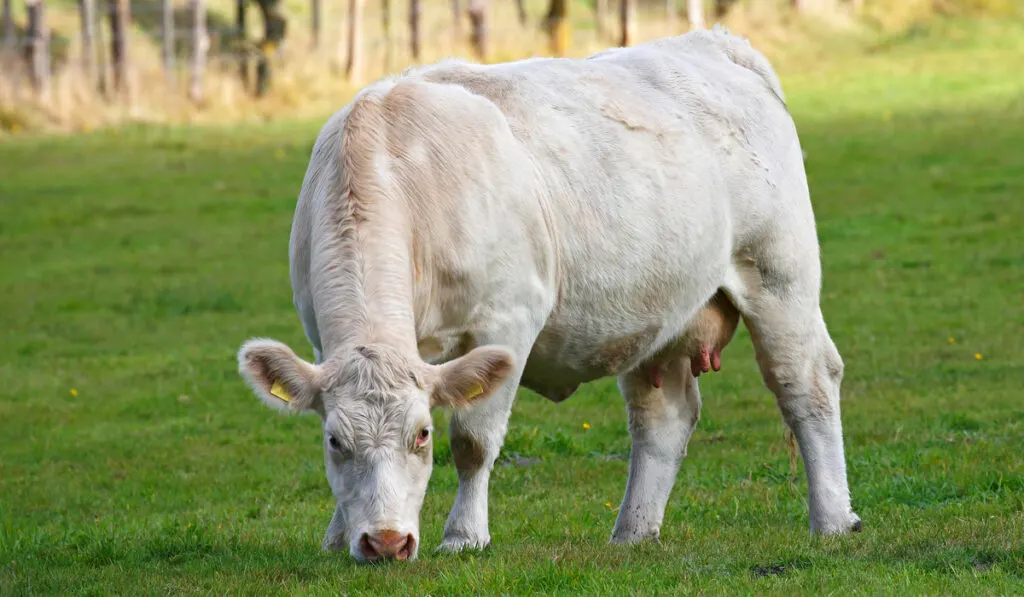
The Charolais cow, as you may tell from the name, originated in France. These large animals are prized for their meat and milk and were an important import into the United States in the early 20th century. Since they’ve been in the country for so long, most Charolais cows have mixed with other breeds.
It can be hard to find purebred Charolais cows. Farmers love these cows because they are robust and do well in a variety of climates. A lot of cattle ranches introduce Charolais cows into their herds when they want to increase the size of the calves.
As far as appearances go, these cows come mostly in light colors with hues of brown coloring throughout their hides.
Piedmontese Cows
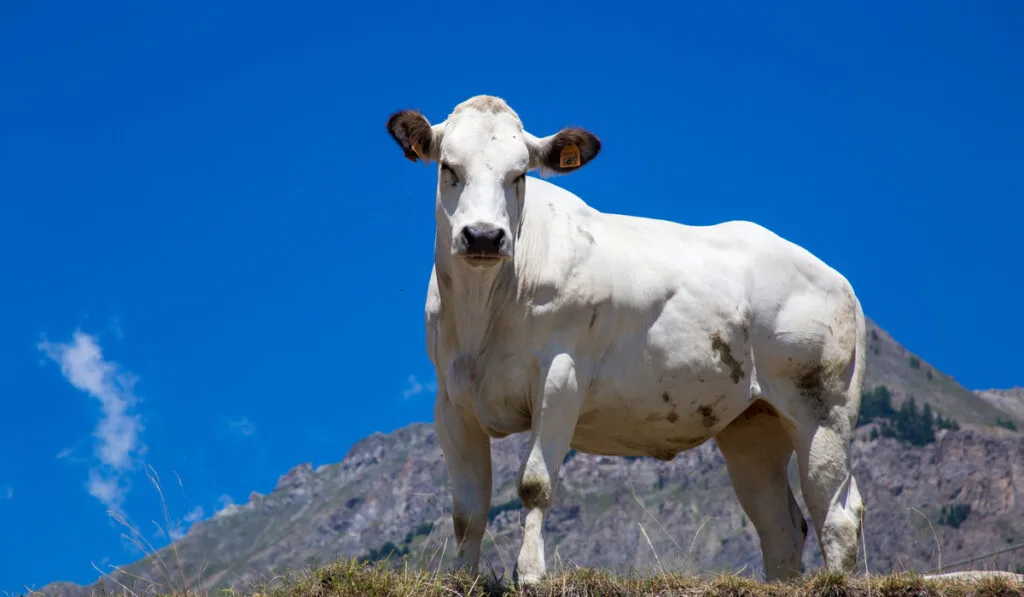
The Piedmontese cattle breed is an Italian breed of cow. It’s a mix between the Auroch cow that hails from Europe and the Zebu cattle breed originally from Pakistan. These creamy and brown cows are low maintenance and bred mostly for their delicious meat.
Farmers love these cows because they don’t get sick often and they have a muscly texture to them. Italians still use Piedmontese cows in a lot of their dairy products, but here in the U.S., they are mostly beef-producing cows.
The Scottish Highland
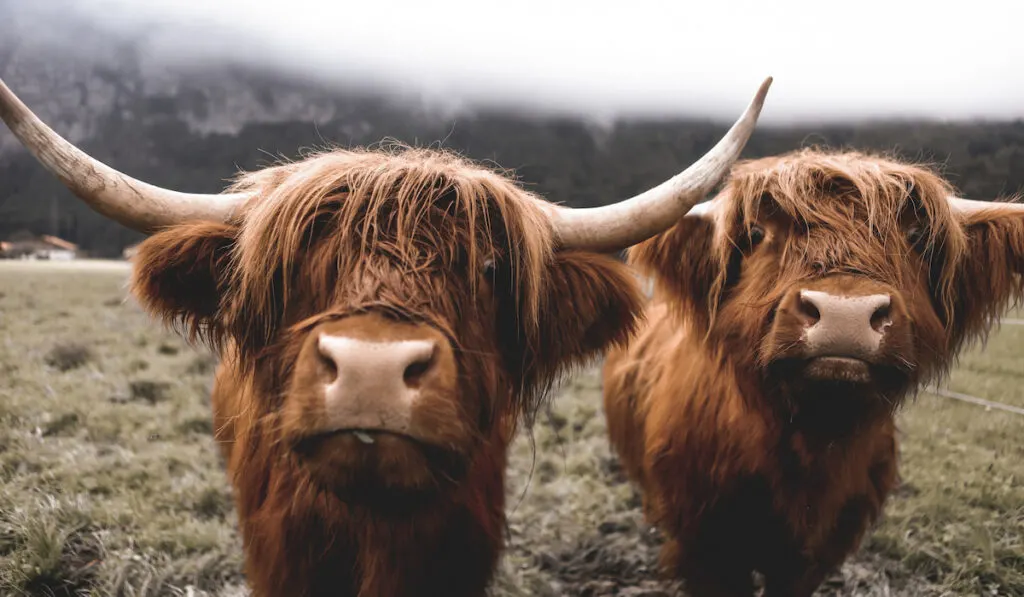
You can spot a Scottish Highland cow a mile away. These cows have a shaggy white, brown, or black coat, and you can see two curved, sharp horns sprouting out of their furry heads. These cows have spent generations in cold, harsh Scottish weather.
Evolution has made them into strong cows that are very disease-resistant. They can live in very cold temperatures and do well even in snowy areas. One interesting fact about Scottish Highland cows is that their hair provides warmth, so they have less fat than many other types of cows.
This means that their meat is leaner. They also like to eat many of the weeds that other cows won’t, so they can be ideal for people who live in places with more challenging pastures.
Texas Longhorns
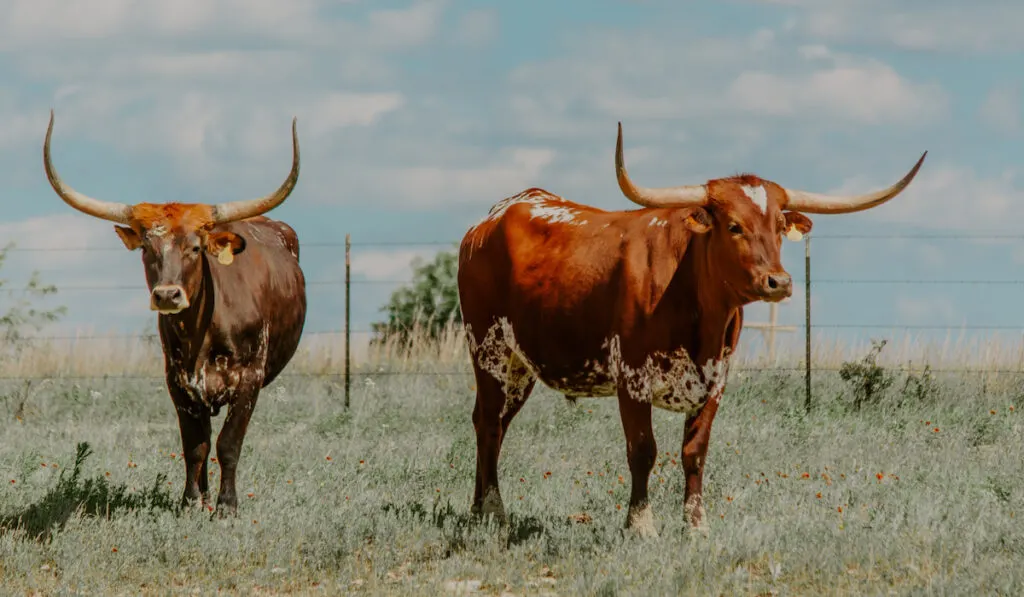
The Texas Longhorn is the quintessential Western cow. It’s an American breed known for its massive horns that grow to be several feet long.
If you go to Texas, you’ll see people wearing t-shirts and caps with longhorn horns on them. It’s the mascot of the University of Texas, and this breed is a staple of almost every rodeo.
This cow is believed to be an adaptation of some of the first cows brought to the Americas more than 500 years ago. They were nearly pushed into extinction in the early 1900s, but have since regained popularity and are in strong numbers today. They live a long time, eat coarse brushes, and calve easily.
Guernsey Cows

Guernsey cows have a high-class nickname thanks to the color of their milk. People call them ‘The Royal Breed’ because their milk comes out looking like gold. The reason? These cows have very high levels of Vitamin A in their milk, which gives it its golden hue.
They were also originally from Britain but were likely the result of two French breeds mixed together. These cows first made their way to the United States in the early 1900s, and have been a staple of many milk farmers ever since.
Ayrshire Cows

Some people call these cows Dunlops, but they are the same breed of cattle. These are originally Scottish cows, though they’ve been in the U.S. now for over 200 years. Farmers prefer these mostly white with brown spots cows because they live longer than most other dairy breeds.
They also typically have dominant personalities, something you should be aware of if you’re introducing them to your herd or if they will be around your other animals on the homestead. However, their strong personalities come in handy whenever would-be predators come around.
Jersey Cows

The Jersey cow breed is believed to be the second-largest dairy cow breed anywhere. And, no, this isn’t a cow from New Jersey. This breed of cattle originally hails from Jersey, England – one of the three popular Channel Island cattle breeds.
People love using these cows for dairy cows because their milk has a lot of butterfat in it. When it comes out, it has a yellowish color to it and is great for butter, cheeses, and other high-fat products.
Jersey cows are small in stature, so farmers can fit more of them on their land and yield higher milk production. They also are relatively disease-resistant and are generally calm animals. They’re fertile cows, so many breeders use them to grow the size of their herd quickly.
Belted Galloway
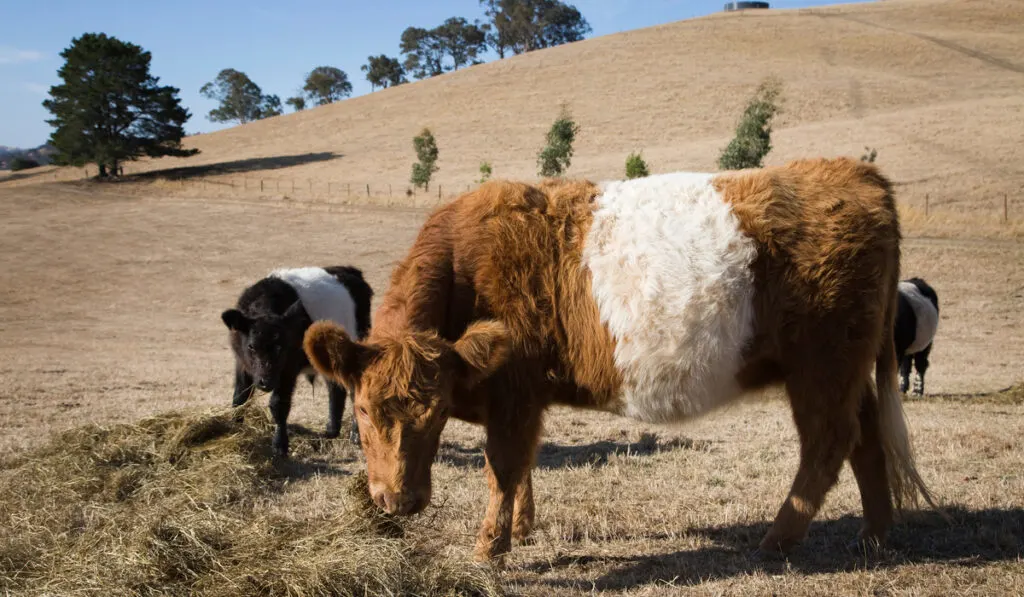
The Belted Galloway comes in a lot of different colors, but its characteristic thick white stripe going down the center of its belly is what gives it away. There are a lot of brown and white Belted Galloways dotting farms all over the world.
They have hairy coats that make them look a bit shaggy, but it’s what protects them from cold weather in the U.K. where they are originally from.
These cows are prized for their marbled meat and how quickly they grow into adult cows. Farmers also like them because they live a long time and aren’t too picky when it comes to rough grazing.
